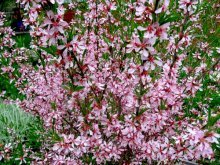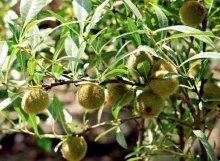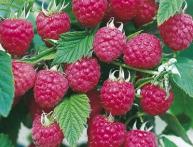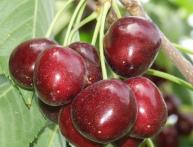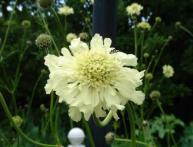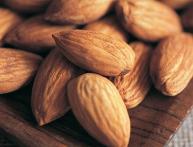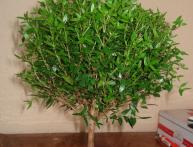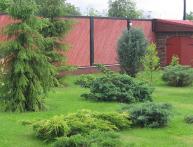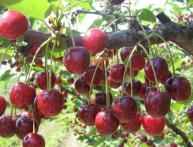Low almond: a master for all branches – decorator, healer and honey planter
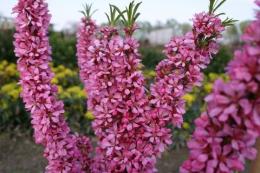
It is quite rare to find such a successful combination of qualities as stunning decorativeness (both during flowering and after), high productivity, medicinal properties and unpretentiousness of the plant. We will talk about an almond variety that can be successfully cultivated even in Siberia without shelter for the winter.
Content:
- Almonds are low. Description and morphology of the variety
- Decorative use of the plant
- Low almond oil, beneficial properties of the fruit and contraindications
- Planting, care, reproduction, protection from diseases
Almonds are low. Description and morphology of the variety
Unlike more than 30 species of its fellows that bear fruit in the subtropics, low almond is a winter-hardy species and has been known in our area for a long time, and accordingly, it has many other names. Synonymy of the species:
- Almonds low
- Steppe almond
- Almond dwarf
- Bobovnik
- Georgian almonds
- Almond Ladybura
These names were introduced at different times by different authors, but they all mean Low almond (Amygdalus nana L.) - a small slow-growing deciduous shrub of the Rosaceae family, Almond species, Plum genus, perennial. The height of the plant reaches 2 meters, the branches are thin, erect, with short shoots (which many take for thorns).
The crown is spherical or ovoid, the foliage is located on long petioles, frequent, juicy green in color (the glossy side of the leaf is dark, the matte side is light), the leaf shape is lanceolate, size - 6 cm.
It blooms profusely for several weeks in March-April. The buds are burgundy, located on short shoots, sessile. The petals are long (10-17 mm), ovoid or oval, pale pink. The flowers are large, 2-3 cm in diameter, bloom simultaneously with the leaves. The aroma is bitter.
The fruit is a broadly ovoid drupe, 1-2 cm long, tomentose-shaggy, flattened. The core is dense, with a ventral groove and a rough, grooved surface. Ripens in July.
Low almonds are common in Western Europe and in the south of Eastern Europe, in the Crimea, the Caucasus, Altai and Central Asia. It grows on steppe slopes, on the edges of forests, in rocky gorges, ravines, is prone to the formation of thickets, but there are also single plants, cultivated since 1683. The rafts are poisonous to cattle.
This shrub deserves special attention from gardeners: it is undemanding to soil and growing conditions, drought-resistant, tolerates pruning and smoke well, and is winter-hardy. Widely used in decorating the site, cultivated due to the high oiliness of the fruit. Often used as a basis for selection - peach varieties based on low almonds show amazing endurance.
Decorative use of the species

Gardeners often rack their brains to find suitable plant species, not knowing that this unpretentious tree hides such stunning beauty - it’s not for nothing that the plant belongs to the Rosaceae family.
Low almonds are divided into two forms, which have become the basis for many varieties:
White-flowered form, varieties:
Low Hessler almonds, varieties:
- Pink fog
- Pink flamingo
The blossoming of almond bushes is very similar to the blossoming of sakura - a light, delicate cloud of pink. They look impressive both individually and in groups. alley plantings, suitable for decorating rocky hills and forest edges. Often a flowering almond bush or group becomes a decoration for a low coniferous planting against the backdrop of an ideal lawn. The tenderness and fragility of the almond flower is often emphasized by large, rough-shaped stones, curved paths and proximity to the surface of the pond.
The presence of low almond in botanical and gardens of constant flowering is a must - it is one of the first to welcome spring with its stunning flower crown, which is so good that it is often cut for bouquets.
Low almond oil, beneficial properties of the fruit and contraindications
Increasingly, this species is cultivated as a fruit tree, mainly sweet-kernel varieties obtained through simple selection. In addition to 40-50% non-drying fatty oil in the composition, this small nut contains protein (about 20%) and mucous substances, mineral salts and 2-3% sucrose.
What makes the bean plant poisonous is the glycoside amygdalin, which releases hydrocyanic acid when broken down. However, the fruit (not the seed!) has some medicinal properties:
- soothing
- painkiller
- laxative
- hematopoietic (for anemia)
- anticonvulsant
- antispasmodic
- used for bloating
- to increase appetite
- Highly effective medicinal and cosmetic water is prepared from almond kernels
Almond oil, obtained from beans, in addition to often replacing more expensive oil, has special medicinal qualities.
In medicine it is used for:
- inflammation of the lining of the gastrointestinal tract
- pneumonia (orally, as an expectorant)
- heart rhythm disturbances (6 drops 3 times a day)
- headaches (inside, analgesic effect)
- ear diseases (instilled orally as a warming and painkiller)
- severe cough (decoction of 10 nuts per glass of milk)
The oil is widely used in cosmetology - to nourish and soften the skin of the face, body and head. Its external use is indicated for the treatment of dry dermatitis, herpes, and the elimination of bedsores. It stimulates the growth of hair, eyebrows and eyelashes.
The fruits of the shrub are used to make not only base oil, but also essential oil, which is highly valued in perfumery for its subtle bitter aroma of marzipan.
It is worth mentioning the culinary use of the kernels - after heat treatment they are quite suitable for food and are used in ground form as a savory seasoning in hot and cold dishes.
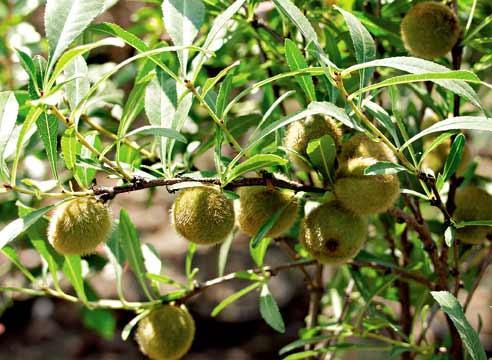
Low almonds are also nutritious without limitation for bees - they are one of the earliest and most voluminous stores of pollen and nectar, the honey productivity of large plantings of almond trees is 30-35 kilograms per hectare.
Never eat fruit seeds raw, they are very poisonous and can cause irreversible changes in the body, and death is possible.
Planting, care, reproduction, protection from diseases
Is it difficult to grow this wonderful plant? Not at all, the most important thing is to choose the right place. Low almond loves light areas, and its beautiful flowers are sensitive to the wind. Easily propagated by root shoots (which are formed in large numbers with frequent pruning), dividing bushes, seeds, layering, and grafting.To divert, it is enough to pin a flexible shoot to the ground, however, the shoots will not appear immediately, perhaps they will not appear in a year - this is the slowest way.
Most often, planting is done with seeds, which are stratified for 4 months at a temperature of 3-5 °C. Planted in nutritious loose soil and soil mixture (leaf soil, humus, sand 3:2:1) with the addition of dolomite flour or lime, drained with crushed stone or broken brick (no more than 20 cm).
Over the course of a year, the bush grows 30-40 centimeters from the seed. Almonds low likes regular feeding (in spring and autumn add mullein), a little bit to under or over water, but not too much. Dry and diseased shoots must be pruned; they generally tolerate pruning well and respond by enlarging their root system. By the way, plants with good growth are used to strengthen slopes.
Gardeners and decorators should pay attention to this unpretentious and at the same time such an exotic and ornamental shrub, capable in skillful and loving hands of diversifying its owner for most of the year and with its flowering clearly explains why the name of the genus comes from the name of the beautiful Phoenician goddess Amidala.
Low almond blossom on video:
Interesting information about the vegetable garden

